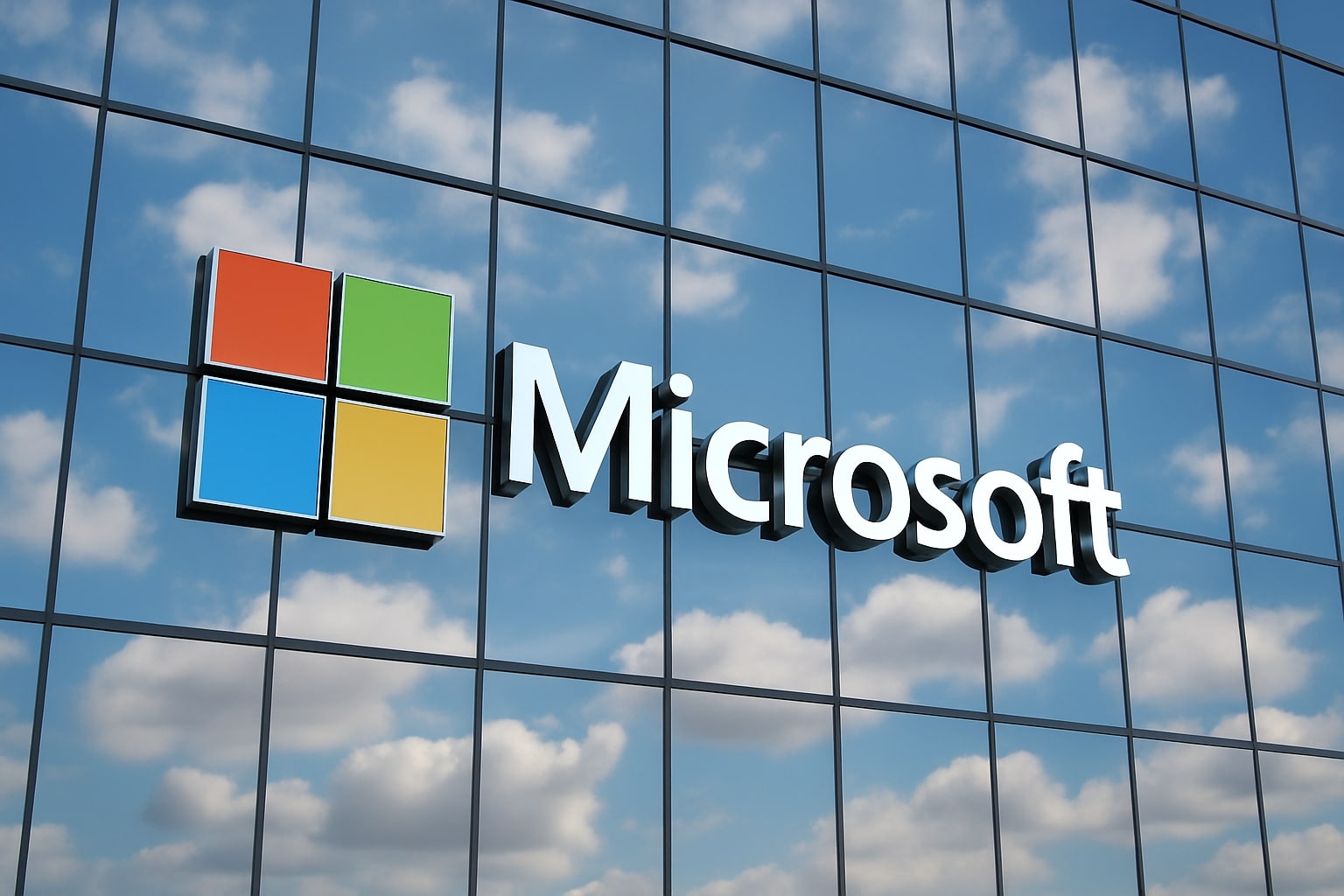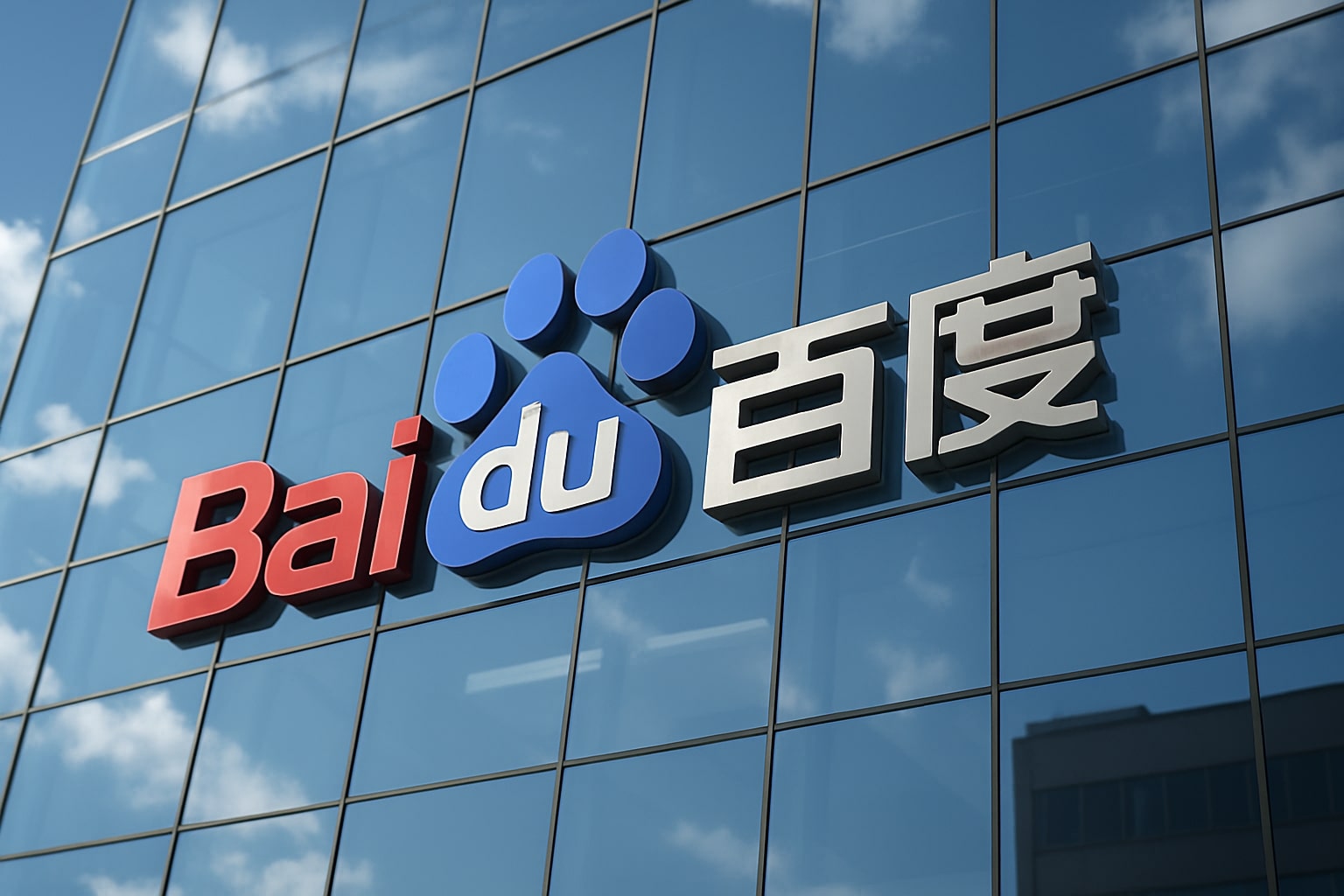
Microsoft Stock Price Forecast - MSFT Shares Powers Through $493 As $77.7B Q1 Revenue
With Azure up 40%, EPS at $4.13, and a $3.77T valuation, Microsoft strengthens its dominance in AI and cloud amid record infrastructure investment | That's TradingNEWS
Microsoft Corporation (NASDAQ:MSFT) – AI Expansion, Cloud Acceleration, and Multi-Trillion-Dollar Execution
Microsoft Corporation (NASDAQ:MSFT) trades near $493.79, reflecting a market capitalization of $3.77 trillion, as investors recalibrate expectations following its fiscal Q1 2026 results. The company’s recent sell-off — down from $507.49 — belies one of the strongest operational performances in big tech, marked by surging cloud revenue, disciplined AI capital expenditure, and unmatched monetization through enterprise software and Azure infrastructure. The balance of growth, profitability, and reinvestment positions Microsoft as a structural leader in the global AI ecosystem.
AI Infrastructure Dominance And Strategic Partnerships Fuel Growth
Microsoft’s leadership in artificial intelligence is anchored in its ecosystem of partnerships and platform integrations. Its deep alliance with OpenAI, complemented by a new $17–19 billion collaboration with Nebius, ensures redundancy and capacity diversification across GPU-intensive workloads. This strategic layering secures access to compute infrastructure as global demand continues to exceed available supply — an imbalance now defining the AI infrastructure cycle. At the same time, OpenAI’s commitment to spend an additional $250 billion on Azure strengthens Microsoft’s multi-year revenue pipeline. The company’s Intelligent Cloud division, which includes Azure, saw revenue surge 28% year-over-year to $30.9 billion, with Azure and related services growing 40% (39% constant currency). This acceleration in back-to-back quarters indicates consistent enterprise migration to Azure and higher-margin AI workloads. These gains arrive amid ballooning capital expenditure: $34.9 billion in Q1 alone, a 75% increase year-over-year, reflecting the largest infrastructure buildout in Microsoft’s history. Management expects CapEx growth in FY 2026 to exceed FY 2025, driven by expanded GPU leasing, new data centers, and AI superclusters.
Earnings Surge With Operating Efficiency And Margin Resilience
Revenue for the quarter hit $77.7 billion, a striking 18.4% year-over-year increase, surpassing consensus by $2.3 billion. Non-GAAP EPS came in at $4.13, a 25% jump from the prior year and $0.47 above expectations, showcasing the scalability of Microsoft’s operating model even amid CapEx intensification. Gross margin held steady near 69%, signaling that efficiency gains and software leverage offset lower-margin AI hardware investments. Operating income reached $37.5 billion, translating to a 49% margin, the highest in multiple years. Operating expenses rose just 4.9%, reflecting rigorous cost control across divisions. Net income climbed 12.5% to $27.75 billion, while cash from operations rose 31.8% to $45.1 billion — confirming that elevated CapEx has yet to erode liquidity strength. Microsoft closed the quarter with $102 billion in cash and short-term investments and $363 billion in total equity, reinforcing its capacity to sustain aggressive infrastructure expansion while maintaining a net profit margin of 35.7%.
GitHub Copilot And AI Productivity Flywheel
Beyond Azure, Microsoft’s AI impact cascades through its developer ecosystem. GitHub Copilot, now integrated into nearly all enterprise accounts, counts 26 million users — including entire engineering teams at AMD — generating massive efficiency improvements. Copilot now drives adoption across 80% of new GitHub developers within their first week, a pace unmatched in enterprise SaaS history. The platform houses over 180 million developers, adding one every second, and is quickly becoming a cornerstone of software automation revenue. By embedding AI into developer tools, Microsoft not only expands its subscription base but accelerates feedback loops that improve Azure inference efficiency. This internal synergy between AI consumption and AI delivery creates what executives call an “AI productivity flywheel” — a self-reinforcing model where every Copilot-driven coding task ultimately increases Azure compute utilization.
Segment Performance: Cloud Strength Offsets Margin Compression
Microsoft’s Intelligent Cloud segment remains its main growth engine, contributing $30.9 billion of total revenue and outpacing both Productivity & Business Processes and More Personal Computing divisions. The Productivity segment posted $19.4 billion, driven by Office 365 Commercial revenue up 15%, while LinkedIn revenue climbed 11% on stronger hiring demand. More Personal Computing, which includes Windows OEM and Surface hardware, rose 6% to $14.3 billion, aided by stabilizing PC shipments and Xbox content growth. Gross margin compression in cloud infrastructure — down roughly 80 basis points — was mitigated by software leverage and record usage of Microsoft 365 AI Copilot, which has now surpassed 150 million monthly active users across enterprise clients.
AI CapEx Discipline And Cash Flow Stability
Microsoft’s investment narrative is increasingly defined by disciplined CapEx deployment in AI infrastructure. Despite the $34.9 billion quarterly outlay, the company retained $13.7 billion in free cash flow, down year-on-year but still robust relative to the scale of investment. Analysts estimate Microsoft’s annualized CapEx could surpass $110 billion by FY 2028, yet free cash flow margins are expected to stay above 25%, underscoring balance-sheet durability. Return on assets reached 15.1%, while return on capital stood at 20.2%, maintaining top-quartile efficiency among mega-caps. Management emphasized that current spending remains ROI-accretive, citing record bookings in AI cloud infrastructure and growing reserved instance contracts.
AI Ecosystem Expansion: Anthropic, Nvidia, And Enterprise Integration
Microsoft’s expansion beyond OpenAI continued through its tri-partnership with Anthropic and Nvidia, targeting enterprise AI safety and scalability. This alliance broadens Azure’s access to foundation models and reinforces cross-cloud interoperability. Meanwhile, Microsoft’s AI Foundry now counts 80,000 enterprise customers, representing 80% of the Fortune 500, using Azure AI services. These partnerships are accelerating the monetization of Copilot for Microsoft 365, Dynamics 365, and Security Copilot, creating new high-margin recurring revenue layers. Combined, these AI-enabled services are estimated to contribute $10 billion+ in incremental ARR by FY 2027, according to internal projections shared during the last investor call.
Valuation And Market Dynamics
Despite heavy CapEx, NASDAQ:MSFT maintains one of the strongest valuations in big tech. The stock trades at 31.5× forward earnings, near its 10-year average, suggesting investors have priced in sustained double-digit EPS growth. Microsoft’s PEG ratio near 1.4 reflects a fair balance between valuation and expected earnings acceleration. Revenue growth of 15.6% YoY aligns with normalized enterprise demand, while the 0.65% dividend yield and $10.7 billion in quarterly shareholder returns highlight management’s confidence in cash flow generation. Wall Street consensus remains overwhelmingly bullish — 47 analysts rate MSFT a Strong Buy, supported by the company’s unmatched AI depth and durable software margins. Technically, the stock has support around $485–490 and resistance at $512.50. A breakout above $510 could re-ignite upside momentum toward $540, aligning with the next Fibonacci extension level from its March 2025 rally.
Read More
-
SCHD ETF Price at $27: Can SCHD’s 4% Yield and 9.15% Dividend Growth Beat High-Yield Covered Call ETFs?
15.12.2025 · TradingNEWS ArchiveStocks
-
XRP ETFs Close on $1B Inflows as XRPI at $10.92 and XRPR at $15.52 Hit 52-Week Lows
15.12.2025 · TradingNEWS ArchiveCrypto
-
Natural Gas Price Forecast: NG=F Holds the $4 Floor as Oversupply Clashes with 2026 LNG Demand
15.12.2025 · TradingNEWS ArchiveCommodities
-
USD/JPY Price Forecast - Dollar to Yen At 155: Yen Strength Builds As BoJ Hike And NFP Collide
15.12.2025 · TradingNEWS ArchiveForex
Fiscal 2026 Outlook: Sustained Growth With Controlled Margin Risk
Guidance for Q2 FY 2026 points to revenue between $79.5 billion and $80.6 billion, reflecting a 15% YoY increase at the midpoint. Intelligent Cloud revenue is projected at $32.3–$32.6 billion, implying a 27% YoY gain, with Azure growth near 37% constant currency. Management anticipates COGS rising 21% due to higher AI infrastructure costs, while operating expenses should climb 7%, maintaining solid leverage. This disciplined expansion confirms that even as Microsoft invests at unprecedented scale, it continues to safeguard profitability through automation, AI-driven productivity, and pricing optimization across enterprise subscriptions.
TradingNews Verdict – NASDAQ:MSFT: Buy On Weakness, AI Infrastructure Leader With Durable Profitability
After synthesizing all operational, financial, and strategic metrics, Microsoft Corporation (NASDAQ:MSFT) remains a Buy, supported by powerful AI monetization, Azure’s sustained 40% growth, record-high margins, and balance-sheet resilience. The temporary valuation pullback around $493–$500 presents an opportunity for accumulation before the next expansion cycle. The company’s integrated AI architecture — spanning OpenAI, Nebius, Anthropic, and GitHub Copilot — positions Microsoft as the defining infrastructure backbone of the AI era. With free cash flow above $13 billion per quarter, a 35% profit margin, and CapEx discipline aligned to multi-year demand, MSFT stands as the most strategically balanced AI-cloud hybrid in the market.


















